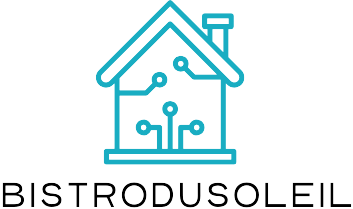Table of Contents
ToggleIn a world where smart devices are taking over homes faster than a cat can knock a glass off the table, managing household finances can feel like herding cats. Enter smart home budgeting tools—your digital sidekick in the quest for financial harmony. These nifty apps and platforms don’t just crunch numbers; they help users take control of their spending, save for that dream vacation, or finally stop buying avocado toast every morning.
Imagine a budgeting tool that’s as intuitive as your favorite streaming service and as reliable as your morning coffee. With the right smart home budgeting tools, users can automate savings, track expenses, and even set financial goals—all while sipping on their lattes. It’s time to turn financial chaos into order, one smart decision at a time.
Overview of Smart Home Budgeting Tools
Smart home budgeting tools provide innovative solutions for managing household finances. These applications, designed for seamless integration with smart devices, allow users to track expenses and save for specific goals effortlessly. Many tools utilize automation features to help users streamline their financial processes, ensuring goals remain at the forefront of their budgeting strategies.
Features typically include expense categorization, real-time analytics, and personalized recommendations. Expense categorization automatically organizes spending into predefined areas, such as groceries or utilities. Real-time analytics offers insights into spending patterns, highlighting trends and areas for improvement. Personalized recommendations adapt to individual spending habits, providing customized tips for better financial management.
Several popular smart home budgeting tools exist, each catering to different user needs. Tools like Mint and YNAB (You Need a Budget) focus on comprehensive financial overviews, while others, such as PocketGuard, emphasize expense tracking. Choosing the right tool hinges on specific requirements and preferences, as each app delivers unique features to enhance budgeting practices.
Integration with other smart devices further enhances these tools’ capabilities. Smart speakers and connected home assistants often facilitate hands-free access to budgeting insights. Users can inquire about their current spending or ask for reminders about upcoming bills directly through their devices.
Overall, smart home budgeting tools transform financial management into a user-friendly experience. By simplifying tasks and promoting better spending habits, they empower individuals to take control of their finances more effectively.
Benefits of Using Smart Home Budgeting Tools
Smart home budgeting tools offer numerous advantages that enhance financial management for users. These tools not only provide key features but also support better financial decisions and awareness.
Increased Financial Awareness
Smart home budgeting tools significantly enhance users’ financial awareness. Users gain insights into their spending habits through detailed reports and analytics. Each expenditure categorization makes tracking more straightforward, helping identify areas for potential savings. Users can set specific financial goals, and these tools will highlight progress towards those targets. With notifications and reminders, users stay engaged and informed about upcoming bills. This ongoing engagement encourages proactive financial planning, ultimately leading to better decision-making.
Streamlined Expense Tracking
Expense tracking becomes effortless with smart home budgeting tools. Integration with bank accounts allows for automatic transaction imports, reducing manual entry. Users experience real-time updates on their financial status, which simplifies budgeting efforts. Each tool typically offers customizable categories, ensuring they fit individual lifestyles or spending habits. These features provide a clear view of daily expenditures, enhancing users’ ability to monitor finances. By offering visual summaries and graphs, these tools make it easy to grasp financial health at a glance.
Popular Smart Home Budgeting Tools
Smart home budgeting tools streamline financial management tasks, offering diverse features to elevate budgeting experiences. Here are several popular tools that stand out in their capabilities.
Tool 1: Mint Overview and Features
Mint excels in expense tracking with its user-friendly interface. This tool automatically syncs with bank accounts, categorizing transactions in real-time. Detailed spending reports reveal insights into spending habits, enhancing financial awareness. Users can set personalized budgets and receive alerts for bill due dates. Financial goal setting becomes straightforward, helping users stay on track. Mint also provides tips on how to save money, making it a comprehensive choice for budget-conscious individuals.
Tool 2: YNAB Overview and Features
YNAB, or You Need A Budget, emphasizes proactive financial management. It encourages users to assign every dollar a job, fostering an engaged budgeting approach. This tool supports goal tracking for savings and spending categories. Users benefit from its real-time updates, which reflect financial changes promptly. YNAB’s educational resources guide users on budgeting principles, promoting informed money decisions. The collaborative features allow users to connect with family members, enhancing collective financial planning.
Tool 3: PocketGuard Overview and Features
PocketGuard simplifies budgeting by automatically tracking income and expenses. It provides users with a clear view of how much spending money remains after covering bills and savings goals. The app’s “In My Pocket” feature offers insights on disposable income, promoting healthier spending habits. Customizable categories help users tailor their budgets. PocketGuard’s straightforward design makes it easy for anyone to adopt effective budgeting practices. Integrating with bank accounts ensures real-time data accuracy, enhancing user experience.
How to Choose the Right Smart Home Budgeting Tool
Choosing the right smart home budgeting tool involves understanding essential features and evaluating user experience.
Key Features to Consider
Consider expense categorization, which helps users track specific spending areas effectively. Real-time analytics provide valuable insights into financial habits. Automated transaction imports simplify the tracking process, saving time and reducing manual entry. Personalized recommendations enhance budgeting strategies by suggesting tailored approaches. Integration with bank accounts enables seamless data synchronization, allowing effortless management of finances. Users should also evaluate the goal-setting features, as they foster proactive savings efforts.
User Experience and Interface
User experience plays a crucial role in the selection of budgeting tools. An intuitive design allows users to navigate the app effortlessly. A responsive interface ensures quick access to essential features, making management convenient. Clear visualizations of spending trends can help users understand their financial situations at a glance. Mobile compatibility allows users to budget on the go, further enhancing accessibility. Engaging educational resources within the app can aid in making informed financial decisions and improving overall financial literacy.
Smart home budgeting tools represent a significant advancement in personal finance management. By integrating seamlessly with everyday devices, these tools empower users to take charge of their financial futures. The ability to track expenses in real-time and receive personalized insights transforms how individuals approach budgeting.
With options like Mint, YNAB, and PocketGuard, users can find a solution that fits their unique needs. The convenience and automation offered by these tools not only make budgeting easier but also encourage proactive financial habits. As technology continues to evolve, embracing these smart solutions can lead to more informed financial decisions and a healthier financial lifestyle.




